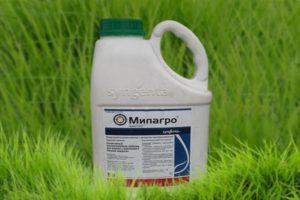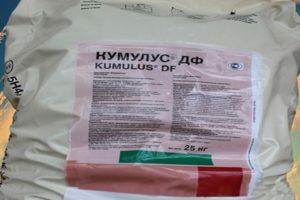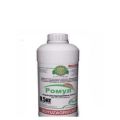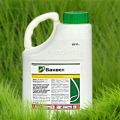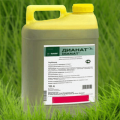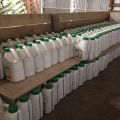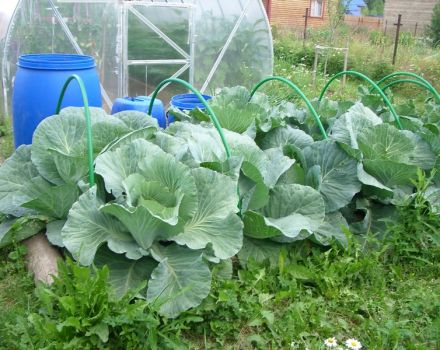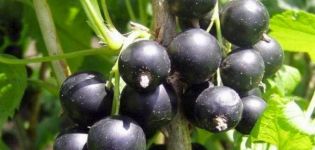Instructions for use and consumption rates of herbicide Typhoon
Weeds on the plot often slow down the growth of planted fruits and vegetables. Therefore, when unnecessary grass appears, you must immediately get rid of it. For this, the Typhoon herbicide is often used. Before using such a herbicidal liquid, it is necessary to understand in more detail its description and recommendations for use.
Content
- 1 Active ingredients, release form and purpose of the herbicide "Typhoon"
- 2 How does weed control work
- 3 Pros of using
- 4 Consumption rate for different plants
- 5 Preparation and application of the working solution
- 6 Handling precautions
- 7 Toxicity degree
- 8 Compatibility with other products
- 9 How to store the herbicide?
- 10 Are there any analogues?
- 11 Conclusion
Active ingredients, release form and purpose of the herbicide "Typhoon"
Typhoon is a non-selective herbicide that is used to completely kill weeds. The main component used in the manufacture of the product is isopropylamine salt. This substance is considered a derivative of glycine, which, when it comes into contact with weeds, leads to their death.
The product is produced in plastic cans, the volume of which is ten liters. However, herbicides can also be found in smaller containers of five liters.
How does weed control work
Before using Typhoon, one should familiarize oneself with the peculiarities of its effect on weeds.
After the completion of the treatment, the active ingredient of the herbicide gradually penetrates into the weed plants through the root system. Over time, isopropylamine salt accumulates in the stems and foliage, which disrupts lipid metabolism. This leads to the fact that the treated weeds stop developing, their photosynthesis stops, and the stems with leaves dry out.
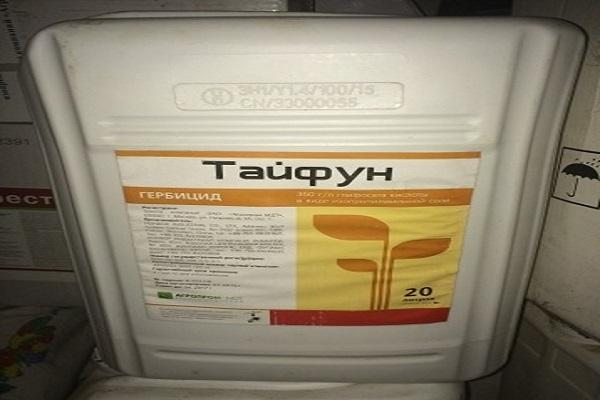
Pros of using
"Typhoon" is popular among summer residents due to its merits. Among the main advantages of this herbicidal composition are the following:
- is able to completely destroy all weeds that grow in the garden or in the garden;
- has no soil activity;
- removes even old shrub weeds;
- is resistant to precipitation and temperature extremes;
- retains its protective properties for one and a half months;
- well compatible with many products.
Consumption rate for different plants
Before using the Typhoon, it is imperative to understand its consumption rates, which directly depend on the plants grown on the site:
- Corn. When processing the plot where corn will be grown, one and a half liters of Typhoon are consumed per hectare.
- Sunflower. In this case, the consumption rate of the herbicide mixture is increased to two liters.
- Vegetable crops.When processing a plot for vegetables, 300-400 milliliters of funds are spent.

Preparation and application of the working solution
A special instruction will help you properly prepare a working solution for treating the site.
To prepare the solution to spray the weeds, the canister is filled one-quarter with cold water. After that, a herbicide is added to it. It is thoroughly mixed with some water, after which a little more liquid is added to the mixture.
Used "Typhoon" in the evening or morning, when there is no wind that can spread the herbicide to neighboring seedlings.
Handling precautions
When using the Typhoon, certain precautions must be taken. It is necessary to work with the drug in protective gloves so that the skin does not come into contact with the working fluid. It is also necessary to protect the respiratory organs in advance. For this, a gauze bandage or a special respirator is put on the face.
Sometimes the product gets into the eyes, which makes them hurt. To avoid this, they use construction goggles that will reliably protect their eyes from the ingress of herbicide.

Toxicity degree
One of the main features of the Typhoon is that it is practically non-toxic and not dangerous to people. Also, the herbicidal preparation does not harm bees, insects, birds and other warm-blooded animals. The product belongs to the third hazard class.
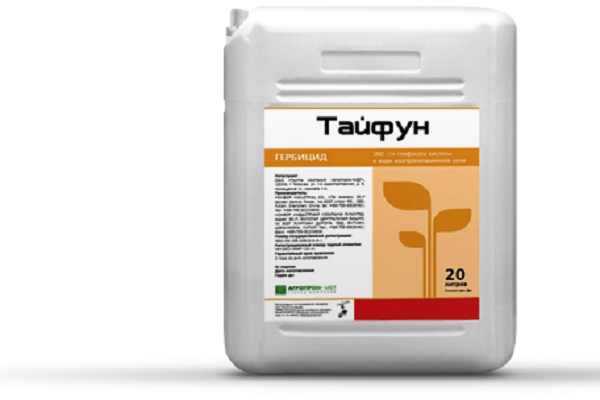
Compatibility with other products
Sometimes the Typhoon is unable to control the weeds that have grown on the site, and therefore has to increase its efficiency. To do this, you must use it in conjunction with other drugs. Experts recommend mixing it with other types of herbicides and nitrogen-type dressings.
However, before you mix products together, you need to read their descriptions and make sure they work for each other.
How to store the herbicide?
The Typhoon must be stored in suitable conditions so that it does not deteriorate for a long time. This herbicide is best kept indoors where the temperature is 10-12 degrees above zero. Some people leave them in refrigerators. However, in this case, they must be placed in an airtight and secure package so that the chemical does not spill or get on the food.

Are there any analogues?
It is not always possible to acquire a typhoon and therefore sometimes you have to use means that have a similar effect. These include the following herbicides:
- Dual Gold. It is a popular herbicide formulation that is often sprayed on vegetable gardens to remove overgrown weeds.
- "Atlas". This drug is most often used in the processing of fields with grain crops.
- "Tara". This tool is used if you need to get rid of old perennial weeds.
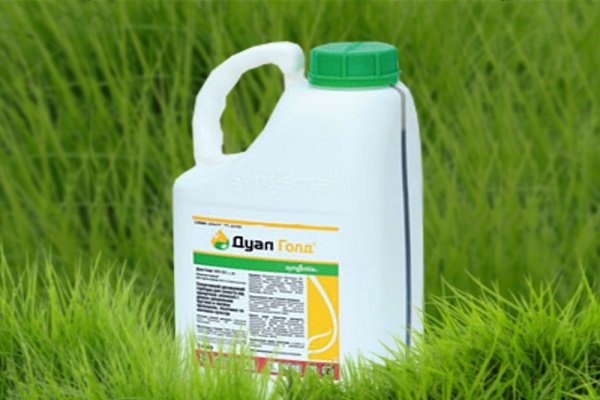
Conclusion
Typhoon is considered one of the most effective remedies against overgrown grass. Before starting the treatment of the site, you need to understand the description of the characteristics of the herbicide and recommendations for using the prepared working mixture.
